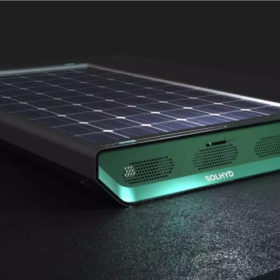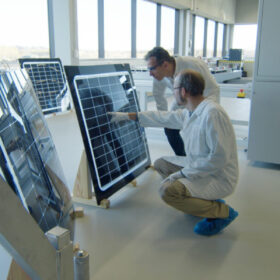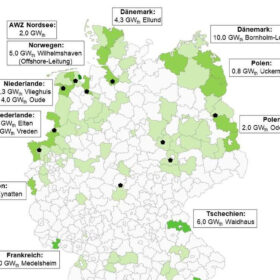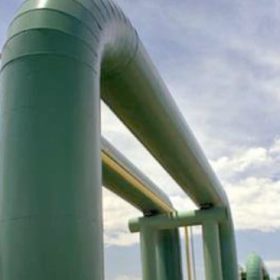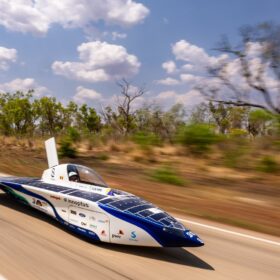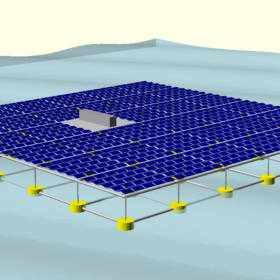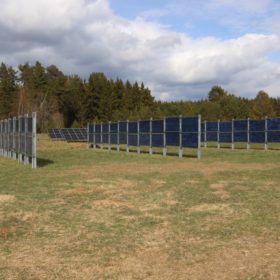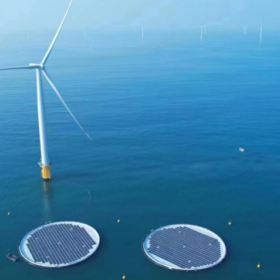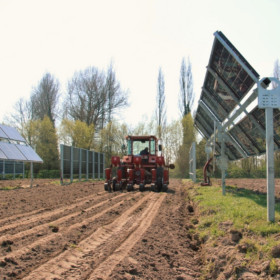New research finds Netflix users may consider solar leasing an attractive solution
A group of researchers in Belgium studied the effect of circular business models on residential solar adoption and found a link between Netflix users and consumers open to certain business models.
KU Leuven spinoff plans MW-scale production of solar-hydrogen panels
Solhyd, a KU Leuven spinoff, is refining its technology to reach megawatt-scale production of hydrogen-producing solar panels with a €6 million ($6.5 million) investment from a consortium of Flemish investors.
Imec integrates silicon heterojunction solar cells into curved surfaces
Imec has successfully integrated silicon heterojunction PV cells into curved surfaces, resulting in a 6% efficiency increase compared to passivated emitter and rear contact (PERC) half cells. The cells are suitable for applications in vehicle-integrated and building-integrated PV (BIPV).
The Hydrogen Stream: FNB Gas presents hydrogen network plan for Germany
FNB Gas has unveiled plans for a hydrogen core network in Germany, while Tree Energy Solutions has started working on an electrolyzer and 1 GW of renewable energy assets in Canada.
The Hydrogen Stream: Malaysia, Singapore mulling hydrogen pipeline
City Energy and Gentari have agreed to study the feasibility of building a hydrogen pipeline from Malaysia to Singapore.
Belgian student solar car takes an early lead in Bridgestone World Solar Challenge
On the journey from Darwin to Adelaide, the Innoptus Solar Team, a non-profit project of students from the University of Leuven, is in a leading position amongst dozens of competitors from around the world in the Bridgestone World Solar Challenge. It tapped European research labs for PV equipment and know-how.
Assessing complementarity of offshore hybrid wind-solar projects in Belgian North Sea
A group of researchers from Belgium performed a complementarity analysis for offshore wind power combined with floating photovoltaics. The team found that complementarity is strong on weekly and monthly timescales, and that it can increase under certain climate change scenarios. Assuming a full permanent transmission loading capability, the researchers calculated that a 3 GW floating solar plant added to the existing wind power in the Belgian North Sea would increase the renewable electricity yield by 47% while occupying only a limited surface area.
Vertical agrivoltaics to reduce PV curtailment, increase water efficiency
An international research group has analyzed a vertical bifacial agrivoltaics system in a drought-stricken part of Chile. They say that the solar array can improve water efficiency for crop irrigation, while the vertical system configuration optimizes PV power generation throughout the day, minimizing curtailment.
The Hydrogen Stream: Researchers test marine green hydrogen feasibility
Mexican researchers have revealed test results for offshore wind-based hydrogen production, while Turkey has started negotiating hydrogen facility partnerships with the United Arab Emirates.
Agrivoltaic facilities with single-axis trackers have lower LCOE than those with fixed structures
New research from Belgium shows agrivoltaic facilities with trackers perform significantly better than projects with fixed structures. The scientists found projects with tracking achieved an LCOE of €0.077 ($0.082)/kWh, while facilities with fixed structures were found to have an LCOE of €0.10/kWh.

